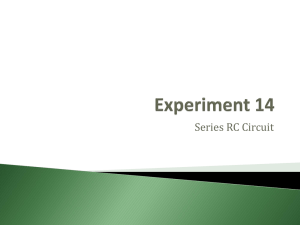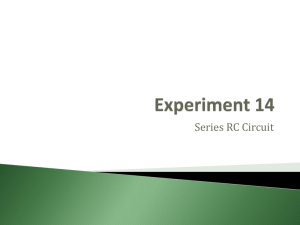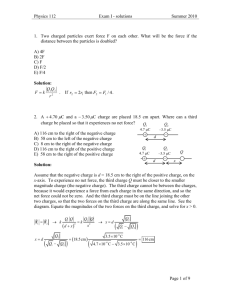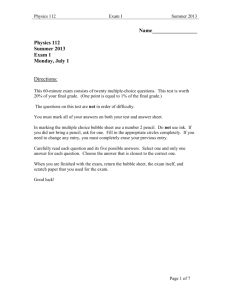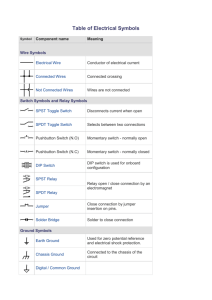Problem Set 2
advertisement
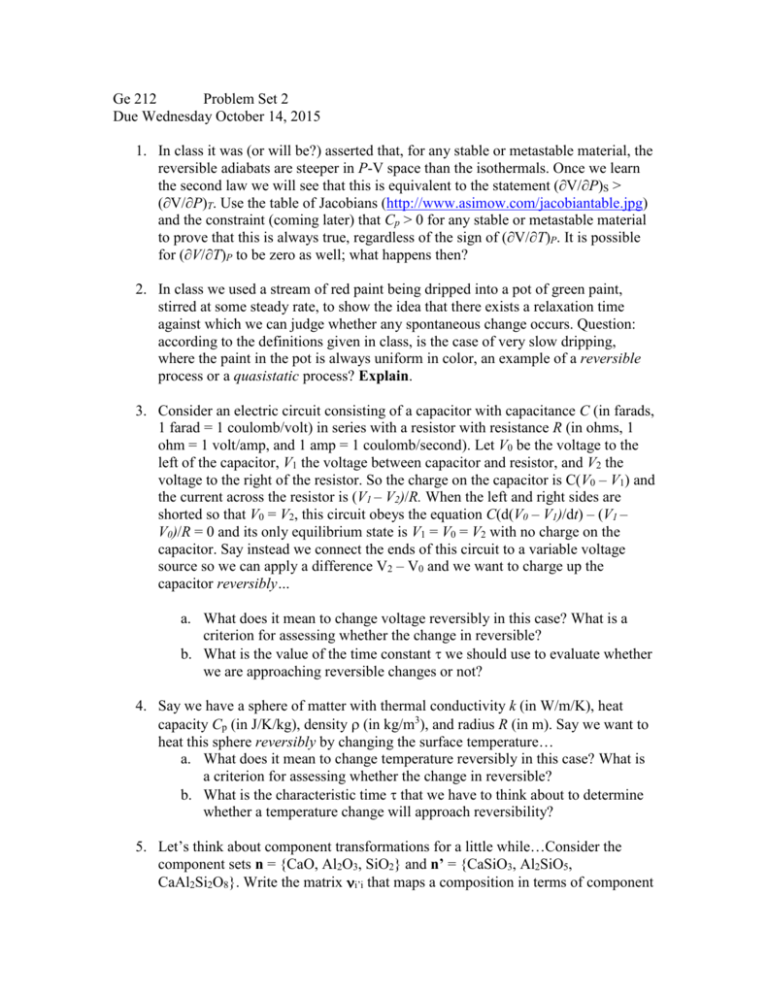
Ge 212
Problem Set 2
Due Wednesday October 14, 2015
1. In class it was (or will be?) asserted that, for any stable or metastable material, the
reversible adiabats are steeper in P-V space than the isothermals. Once we learn
the second law we will see that this is equivalent to the statement (∂V/∂P)S >
(∂V/∂P)T. Use the table of Jacobians (http://www.asimow.com/jacobiantable.jpg)
and the constraint (coming later) that Cp > 0 for any stable or metastable material
to prove that this is always true, regardless of the sign of (∂V/∂T)P. It is possible
for (∂V/∂T)P to be zero as well; what happens then?
2. In class we used a stream of red paint being dripped into a pot of green paint,
stirred at some steady rate, to show the idea that there exists a relaxation time
against which we can judge whether any spontaneous change occurs. Question:
according to the definitions given in class, is the case of very slow dripping,
where the paint in the pot is always uniform in color, an example of a reversible
process or a quasistatic process? Explain.
3. Consider an electric circuit consisting of a capacitor with capacitance C (in farads,
1 farad = 1 coulomb/volt) in series with a resistor with resistance R (in ohms, 1
ohm = 1 volt/amp, and 1 amp = 1 coulomb/second). Let V0 be the voltage to the
left of the capacitor, V1 the voltage between capacitor and resistor, and V2 the
voltage to the right of the resistor. So the charge on the capacitor is C(V0 – V1) and
the current across the resistor is (V1 – V2)/R. When the left and right sides are
shorted so that V0 = V2, this circuit obeys the equation C(d(V0 – V1)/dt) – (V1 –
V0)/R = 0 and its only equilibrium state is V1 = V0 = V2 with no charge on the
capacitor. Say instead we connect the ends of this circuit to a variable voltage
source so we can apply a difference V2 – V0 and we want to charge up the
capacitor reversibly…
a. What does it mean to change voltage reversibly in this case? What is a
criterion for assessing whether the change in reversible?
b. What is the value of the time constant we should use to evaluate whether
we are approaching reversible changes or not?
4. Say we have a sphere of matter with thermal conductivity k (in W/m/K), heat
capacity Cp (in J/K/kg), density (in kg/m3), and radius R (in m). Say we want to
heat this sphere reversibly by changing the surface temperature…
a. What does it mean to change temperature reversibly in this case? What is
a criterion for assessing whether the change in reversible?
b. What is the characteristic time that we have to think about to determine
whether a temperature change will approach reversibility?
5. Let’s think about component transformations for a little while…Consider the
component sets n = {CaO, Al2O3, SiO2} and n’ = {CaSiO3, Al2SiO5,
CaAl2Si2O8}. Write the matrix i’i that maps a composition in terms of component
set n’ to n. In class I asserted that the reverse transformation matrix ii’ = {i’i}–1.
Is this true here? If not, what is wrong with this example?
6. Component transformation in real life
In the MELTS model, pyroxenes are represented as a seven-component system
using these components:
En
Enstatite
Mg2Si2O6
Di
Diopside
CaMgSi2O6
Hd
Hedenbergite
CaFe2+Si2O6
Jd
Jadeite
NaAlSi2O6
Abf Alumino-buffonite* CaTi0.5Mg0.5AlSiO6
Bf
Buffonite
CaTi0.5Mg0.5Fe3+SiO6
Es
Essenite
CaFe3+AlSiO6
(* I am not making this up)
a. How many oxides are present in this model (counting FeO and Fe2O3
separately)?
b. Consider that you are given a composition in terms of moles of the 7
components, which you can write as a vector {En, Di, Hd, Jd, Abf, Bf, Es}. Give
me the transformation matrix you would premultiply by this vector in order to
obtain this composition in moles of oxides (make sure you specify the order of the
oxides in the resulting vector, please!).
c. Now consider the reverse problem, which occurs in real life when you measure
a pyroxene composition by electron probe and Mössbauer or by wet chemistry
and then need to express it in pyroxene components: given the composition as a
vector of moles of oxides, is there a matrix you can multiply by in order to obtain
the composition in moles of the 7 components? If not (hint, hint), why not? –
please explain this both mathematically and conceptually.
d. Assuming you answered ‘no’ to the first part of (c), propose a reasonable
method to accomplish the task of converting from an oxide analysis to component
moles. Is there a sense in which your method does this task as well as possible?
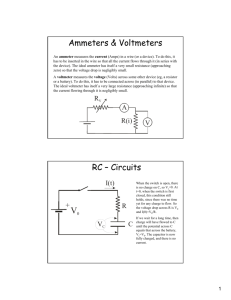


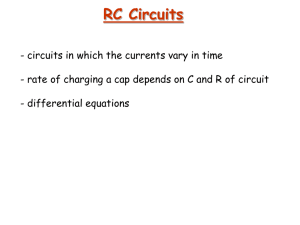
![Sample_hold[1]](http://s2.studylib.net/store/data/005360237_1-66a09447be9ffd6ace4f3f67c2fef5c7-300x300.png)
